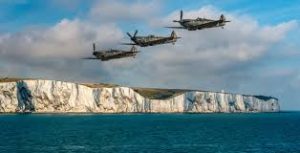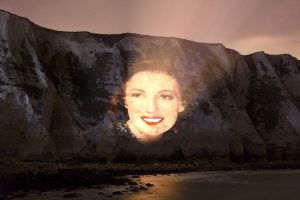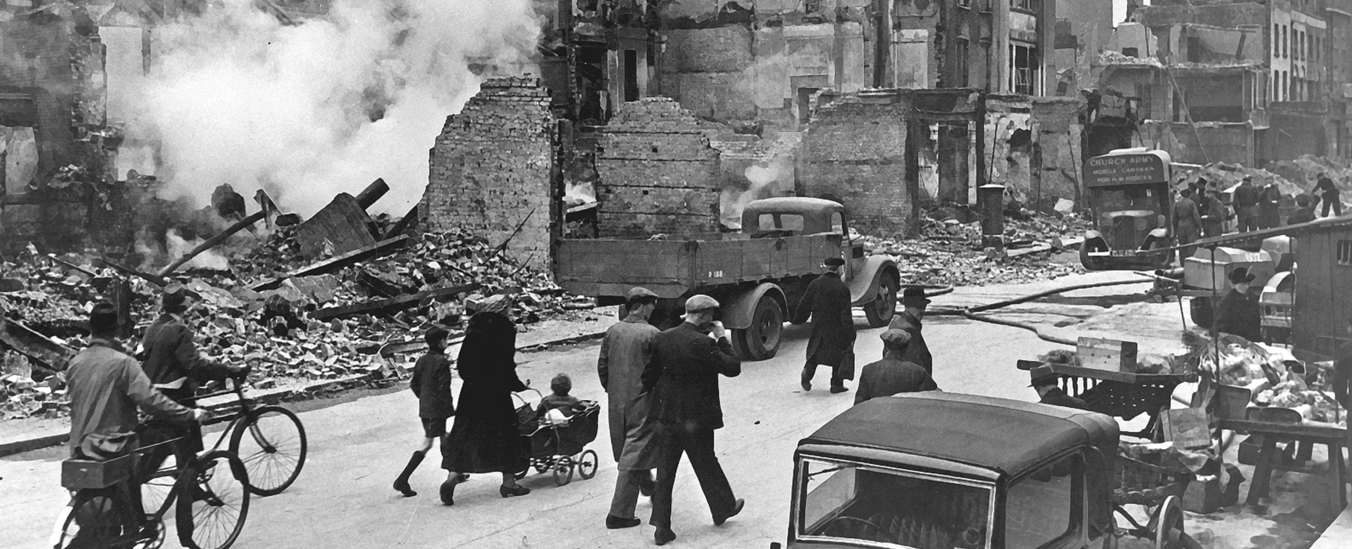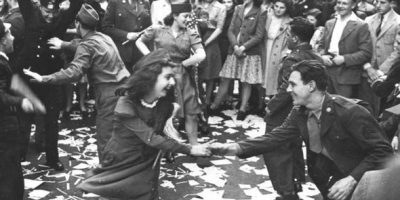Vera Lynn: The White Cliffs of Dover
The white cliffs of Dover
Tomorrow
Just you wait and see
Braving those angry skies
I remember well as the shadows fell
The light of hope in their eyes
I still can hear them say
Bombs up…
But when the dawn comes up
The white cliffs of Dover
Tomorrow
Just you wait and see
And peace ever after
Tomorrow
When the world is free
The valley will bloom again
And Jimmy will go to sleep
In his own little room again
The white cliffs of Dover
Tomorrow
Just you wait and see
The white cliffs of Dover
Tomorrow
Just you wait and see…
The White Cliffs of Dover was a very popular song composed in 1941 by Walter Kent. The lyrics were originally written by Nat Burton. In 1942, Vera Lynn had come out with her version, which was a great hit and one of the most played recordings during World War II.
One of the main reasons why this song was such a great hit during WWII was because it touched everyone’s hearts, giving hope to the British for an end to the war, and attaining peace. This song signifies happiness and well-being.
One of the most ironic thing about this song is that the writers of this song, Nat Burton and Walter Kent were unaware of the fact that there are no bluebirds in Dover, England. Both, writers were American. They adapted the bluebird to signify cheerfulness, prosperity, and a renewal of a new season. In this case, it was giving hope to a better tomorrow to England. Another representation of the bluebird can be interpreted as the American pilots flying from the English airfields, signifying the allied planes. Moreover, the Bluebirds were also a representation of the RAF uniforms. The most important meaning behind adapting this bird was to show that no matter what the British go through during the war, they will continue to keep flying. Furthermore, the adaptation of the white cliffs is also important to recognize. The White Cliffs of Dover served as a defense barrier, which also symbolized hope. After listening to this song, I found it to be somewhat emotional, which I felt was one of the main factors why it was so pleasing to listen to during the war.


Vera Lynn was born in East Ham on March 20, 1917. She was a singer, songwriter, and an actress. She became very popular during World War II, and was known as “The forces sweetheart”. From an early age, Lynn started her performing career as a singer. By the 1930s, she released her first solo record on radio. At this point, she had become Britain’s most popular singer. She often toured around the world to entertain troops during the wartime, even when she knew there was personal risk. She was part of the Entertainments National Service Association. After the war, Lynn had participated in much charity work as she helped ex-servicemen, disabled children, and more.

Vera Lynn had sung this song in 1942. In this year, there were various important historical events taking place. This was the year when American soldiers arrived in Great Britain. It became a fight against Germany at this point, as Britain and America had become allies. During this year also, the U.S. and Britain held the Arcadia Conference, where Roosevelt and Churchill agreed to combining their chiefs of staff, all in order to defeat Germany.
For the most part, this song was played and heard all over England during this time. It had become one of the most played songs. It was also played in America as well. Internationally, it touched people all over the world.

This song was targeted mostly toward the troops that fought during the war. As it gave them hope and a vision for a new and better tomorrow. The lyrics promised the soldiers that the war would soon be over, and peace would be over the White Cliffs of Dover. It also targeted women in the home. It gave them hope as well, to be prepared as they would be able to see their sons, and husbands very soon.
“I hear mother pray, and to her baby say ‘Don’t cry,’
This is her lullaby…. There’ll be blue birds over”.
It’s important to see how this song is very soothing to the mind. It takes away the negative energy of the war, and focuses on the good, on the upcoming future, and a better tomorrow.

There were other popular songs prior to Vera Lynn’s version in 1942. Several others had sung this song like, DIck Todd and Jimmy Dorsey. However, it hadn’t become a great hit until Vera Lynn had sung it later. The songs overall history ties into the history of the geographic White Cliffs of Dover, which was Britain’s symbolic border with the European mainland.
Although this song had been one of the greatest hits of wartime, it still holds an impeccable amount of cultural memory in Britain, and America today. Lynn sang this iconic song about 70 years ago, giving hope to British troops in action. Last year marked Lynn’s 100th birthday, where she was tributed and celebrated by having a 350 feet image of her projected onto the White Cliffs.

Citations:
http://www.nww2m.com/2012/01/january-26-1942-american-soldiers-arrive-in-great-britain/
http://www.worldwar2history.info/1942.html
http://www.bbc.com/news/uk-england-41432066
https://answersingenesis.org/geology/natural-features/white-cliffs-of-dover/







Melissa Dinsman
Your reading of the significance of the “bluebird” in the song was really interesting and made me want to see more close readings of the lyrics in general. In the beginning of the post you do a nice job of summing up the general feel of the song, but pointing to how the lyrics make this happen would have been helpful. You mention that the song is still important in our cultural memory. How is this maintained? Is the song still song? Is it in films? Why is this song remembered when others are forgotten?
Fahmida Begum
Your blog is organized really well with pictures that attach to the song. You showed how significant Vera, herself is to this song. You incorporate a mini bio about her. I also really liked how you broke down the song and explained the meanings.
Fahmida Begum
Saima, your blog is organized really well with pictures that attach to the song. You showed how significant Vera, herself is to this song. You incorporate a mini bio about her. I also really liked how you broke down the song and explained the meanings.